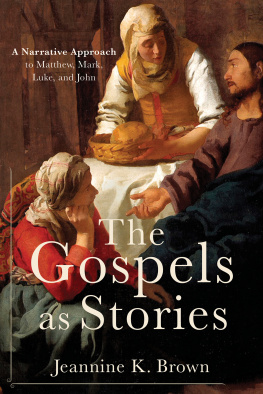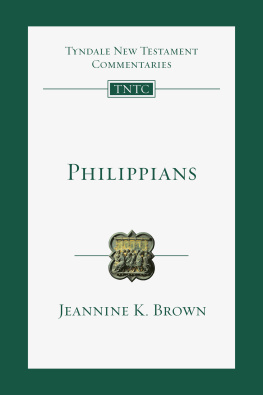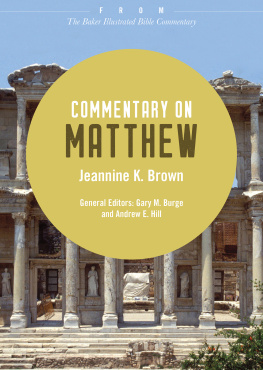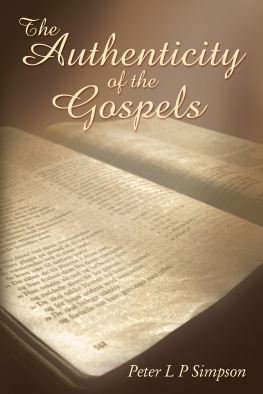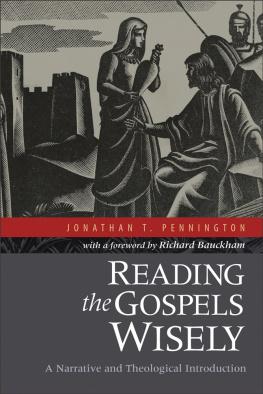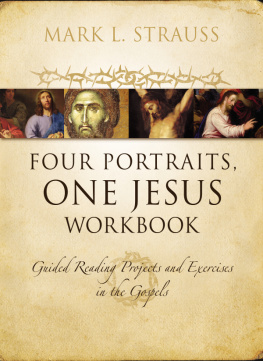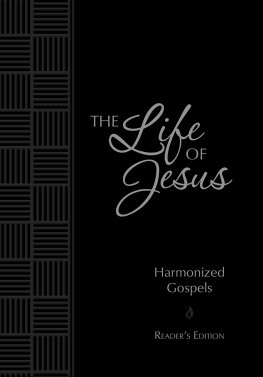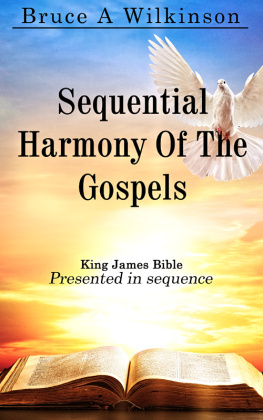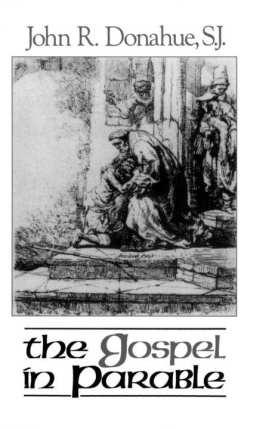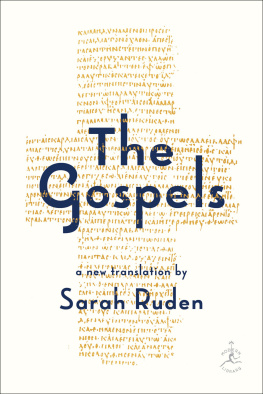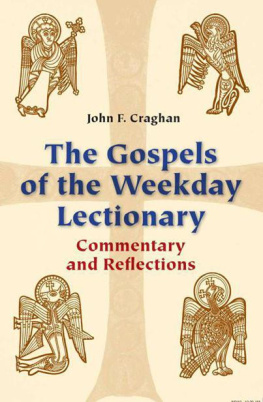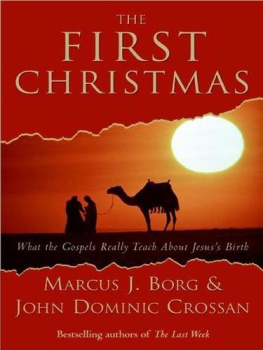1. The Turn to Gospels as Stories: Narrative Criticism in Gospel Studies
2. The Selection, Sequence, and Shape of the Story
3. Narrative Plotting in the Gospel of Luke
4. The People in the Story
5. Matthews Characterization of the Disciples
6. The Stories behind the Story
7. Intertextuality in John: Passover Lamb and Creations Renewal
8. How a Story Theologizes
9. The God of Marks Gospel
10. The Ongoing Power of the Gospels as Stories
Figures
1.1. A Narratives Story Level: The What of the Story
1.2. A Narratives Discourse Level: The How of the Story
2.1. Unique Episodes and Teachings in the Gospels: A Selection
2.2. The Pacing of Matthews Gospel: Alternation of Narrative (N) and Discourse (D)
3.1. Parallel Accounts in the Lukan Birth Narrative (Luke 12)
3.2. Sequencing of Vignettes in Luke 12
3.3. Diagram of Plot and Themes for Luke 4:149:50
3.4. Meal Scenes in the Travel Narrative
3.5. Unique Lukan Parables in the Travel Narrative
4.1. Key Christology Emphases in the Gospels
4.2. Comparison between Episodes of John 3 and 4
5.1. Peter and the Disciples: Distinctive or Similar Portraits?
5.2. Disciples Words Showing Their Inadequate Understanding
6.1. Matthews Gentile Inclusion Theme
6.2. Intertextual Definitions
7.1. The Timing of Jesus Crucifixion in John
7.2. John 19:36 Allusion
7.3. The Seven Signs in John (Chaps. 112)
8.2. Festival Settings in John 510
9.1. The Good News according to Isaiah
9.2. Hearing from God in Mark
10.1. Starting with the Story
Preface
The Gospels as Stories has been a long time in the making. Although I did my doctoral work on a narrative-critical reading of the disciples in the Gospel of Matthew, it took a while for the narrative method I had learned and was honing in my own work to filter into the courses I regularly taught on the Gospels. For example, I continued to follow the traditional route of assigning students a single passage (eight to ten verses) to test their abilities to interpret a Gospel. But each year I taught the Gospels, it seemed less and less helpful to focus students attention on such a small bit of the text when whole vistas of a Gospel remained potentially unexplored. Coupled with my own desire to grasp the whole of a Gospelto hear its narrative logicI began assigning students and myself bigger and bigger projects.
Early on I developed a Gospel plot/theme diagram as an attempt to visualize a wider segment of the text. My first attempt at this kind of narrative diagramming focused on John 112, as I tried to get a sense of the flow of the first half of that Gospel through Johns use of settings, discourses, controversies, the seven signs, and Jesus seven I am statements. From there I moved to Matthew, Mark, and Luke (for an example, see fig. 3.3: Diagram of Plot and Themes for Luke 4:149:50). And I began to press my students in similar ways to grapple with the Gospels as whole stories. A favorite assignment (at least for me, if not for them) is a plot/theme diagram of the Lukan travel narrative (9:5119:27). Given that this section of Luke is notoriously difficult to outline, I thought a different approach for grasping the whole might be helpful. Students have tended to find it so, and they certainly have a better grasp of Luke when they are done.
By teaching the Gospels differently, I learned to apply narrative criticism more consistently (in a form that made particular sense to me) to my own interpretation of the Gospels. Early work in my dissertation on characterization has been augmented by work on plotting (attending to the shaping of each Gospel) and on intertextuality, with the conviction that the Gospel writers use the Old Testament in careful and storied ways for narrating their own stories of Jesus. The Gospels as Stories is the result of these various engagements with plotting (chaps. 23), characterization (chaps. 45), intertextuality (chaps. 67), and narrative theology (chaps. 89).
I am grateful for two very capable research assistants, Jenelle Lemons and Ali Tonnesen, who read and interacted with the book in its various stages. They helped me stay focused on real and thoughtful readers throughout the process of writing. Id also like to thank Jim Kinney at Baker, who gave me my first opportunity to have a book published (beyond my dissertation) and continues to be a valued conversation partner about the direction of my scholarship and writing.
I dedicate this book to my daughters, Kate and Libby. They are lovers of story. Kate, when she was a preschooler, would command during car rides, Tell me another story about Jesus. When I finally ran out of discrete stories, I began sharing with her how Matthew, for example, told a whole string of stories about Jesus healing people (Matt. 89). Her love of story pressed me to communicate more holistically about the Gospels. Libby, as a language arts teacher to seventh and eighth graders, shares her own love of story with her students. Her passion for literaturefor storyis contagious.
. Jeannine K. Brown, The Disciples in Narrative Perspective: The Portrayal and Function of the Matthean Disciples , SBLAB 9 (Atlanta: Society of Biblical Literature, 2002).
. E.g., Jeannine K. Brown, Genesis in Matthews Gospel, in Genesis in the New Testament , ed. Maarten J. J. Menken and Steve Moyise (New York: T&T Clark, 2012), 4259.
. E.g., Jeannine K. Brown and Kyle Roberts, Matthew , THNTC (Grand Rapids: Eerdmans, 2018).
Abbreviations
| AB | Anchor Bible |
| AsTJ | Asbury Theological Journal |
| AT | authors translation |
| BDAG | Danker, Frederick W., Walter Bauer, William F. Arndt, and F. Wilbur Gingrich. A Greek-English Lexicon of the New Testament and Other Early Christian Literature. 3rd ed. Chicago: University of Chicago Press, 2000. |
| BibInt | Biblical Interpretation |
| BLS | Bible and Literature Series |
| BNTC | Blacks New Testament Commentaries |
| CBQ | Catholic Biblical Quarterly |
| CEB | Common English Bible (translation) |
| CH | Church History |
| CSB | Christian Standard Bible |
| DJG | Dictionary of Jesus and the Gospels . Edited by Joel B. Green, Jeannine K. Brown, and Nicholas Perrin. 2nd ed. Downers Grove, IL: InterVarsity, 2013. |
| GBS | Guides to Biblical Scholarship |
| GR | Greece and Rome |
| GW | Gods Word (translation) |
| HBT | Horizons in Biblical Theology |
| Int | Interpretation |
| JBL | Journal of Biblical Literature |
| JETS | Journal of the Evangelical Theological Society |
| JSNT | Journal for the Study of the New Testament |
| JSNTSup | Journal for the Study of the New Testament Supplement Series |
| JSOT | Journal for the Study of the Old Testament |

